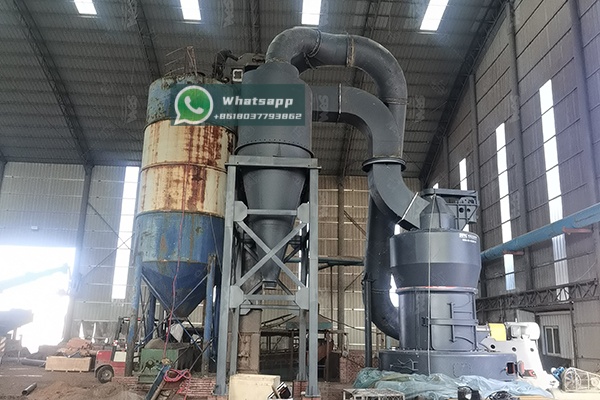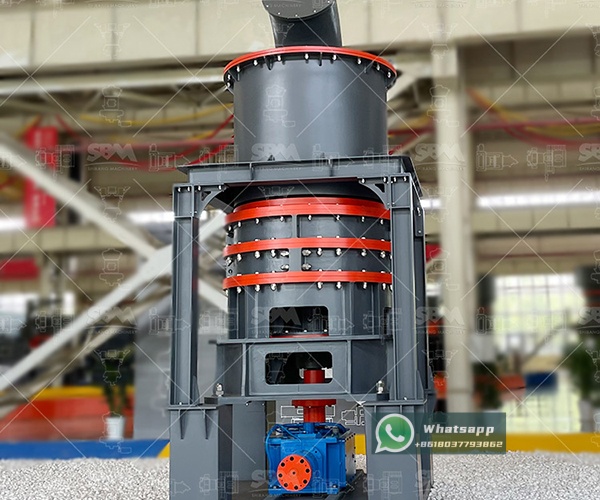Ultrafine Talc Production For The High End Cosmetics And Powder Market
The global cosmetics and personal care industry is experiencing unprecedented growth, with consumers increasingly demanding high-performance, natural, and safe ingredients. Among these, talc remains a cornerstone mineral, prized for its softness, slip, oil absorption, and inertness. However, not all talc is created equal. The transition from standard industrial-grade talc to ultra-fine, high-purity talc represents a significant technological leap, opening doors to premium applications in color cosmetics, face powders, body powders, and various specialty powder markets. This article delves into the critical process of ultrafine talc production and the advanced grinding technologies that make it possible.
The Critical Role of Ultrafine Talc in Premium Products
In high-end cosmetics, the sensory experience is paramount. The texture, feel, and application of a product are as important as its visual appeal. Ultrafine talc, typically defined as talc with a particle size distribution where 97% of particles (D97) are below 10-15 microns, is essential for achieving this premium quality. Its benefits are multifaceted:
- Superior Sensory Properties: Ultrafine particles impart an exceptionally silky, smooth, and velvety feel on the skin, eliminating any grittiness or drag during application.
- Enhanced Opacity and Coverage: The increased surface area of finer particles improves light scattering, leading to better coverage and a more flawless finish in foundations and compacts.
- Improved Blendability: Fine talc particles mix more homogeneously with pigments and other ingredients, ensuring consistent color and texture in the final product.
- Reduced Transparency: For products like loose setting powders, ultrafine talc provides a matte finish without a heavy, chalky, or mask-like appearance.
- Stability and Performance: Controlled particle size distribution prevents caking and ensures long-term stability of the cosmetic formulation.

Technical Challenges in Ultrafine Talc Grinding
Producing talc that meets the stringent specifications of the cosmetics industry is a complex engineering challenge. The primary hurdles include:
- Maintaining Purity and Whiteness: Any contamination from the grinding media or mill internals is unacceptable. The process must preserve the talc’s natural brightness and chemical purity.
- Achieving a Narrow Particle Size Distribution: It is not enough to achieve a fine average size; the distribution must be tight to ensure consistent performance. A wide distribution can lead to clumping and a less refined feel.
- Controlling Heat-Sensitive Properties: Talc is a hydrated magnesium silicate. Excessive heat generated during grinding can drive off moisture, potentially altering its crystalline structure and compromising its performance properties.
- Energy Efficiency: The energy required for comminution increases exponentially as the target particle size decreases. An inefficient process is both economically and environmentally unsustainable.
Advanced Grinding Solutions for Cosmetic-Grade Talc
Traditional grinding mills like basic Raymond mills or ball mills often fall short of the demands for ultrafine, high-purity talc. They can introduce contamination, generate excessive heat, and struggle to achieve a consistently fine and narrow particle size distribution. The industry has therefore moved towards more sophisticated, integrated grinding systems.
Leading this technological charge is Shanghai Zenith Machinery Co., Ltd., an excellent manufacturer of ore grinding equipment in China, which has made great achievements in the field of ultra-fine powder grinding. Zenith’s research and development focus on creating equipment that addresses the specific needs of mineral processors targeting high-value markets like cosmetics.
Zenith’s Premier Solution: The LUM Ultrafine Vertical Mill
For the most demanding applications in ultrafine talc production, Zenith’s LUM Ultrafine Vertical Mill stands out as a top-tier solution. This mill is engineered from the ground up to produce fine and ultrafine powders with high precision and efficiency.
The LUM series integrates multiple processes—grinding, drying, classifying, and conveying—into a single, compact unit. This integrated approach offers several distinct advantages for cosmetic talc production:
- Superior Fineness and Narrow Distribution: The mill utilizes an advanced classifying system that ensures a sharp and stable particle cut. This is critical for achieving the D97 values of 5-30 microns required for premium talc.
- Exceptional Purity: The grinding principle, which relies on material-bed compression between rollers and a table, minimizes direct metal-to-metal contact, significantly reducing the risk of iron contamination and preserving the talc’s natural whiteness.
- Low Operating Temperature: The integrated drying system uses a hot gas generator, allowing for precise temperature control. This prevents thermal degradation of the talc, ensuring its lamellar structure and moisture content remain intact.
- High Efficiency and Automation: The LUM mill is designed for energy efficiency and features intelligent control systems for easier operation and maintenance.
The technical parameters of the LUM Ultrafine Vertical Mill series are detailed below:
Technical Parameters of Zenith LUM Ultrafine Vertical Mill
| Model |
Main Machine Power (kW) |
Capacity (t/h) |
Size Distribution D97 (μm) |
| LUM1125 |
160-200 |
0.8-8.5 |
5-30 |
| LUM1432 |
250-280 |
1.5-12.5 |
5-30 |
| LUM1525 |
220-250 |
1.6-11.5 |
5-30 |
| LUM1632 |
280-315 |
2.0-13.5 |
5-30 |
| LUM1836 |
355-400 |
2.3-15 |
5-30 |

A Versatile Alternative: The XZM Ultrafine Grinding Mill
For production lines requiring exceptional fineness up to 2500 mesh, Zenith’s XZM Ultrafine Grinding Mill presents a robust and versatile alternative. This mill is widely recognized for its reliability and ability to produce superfine powders from soft to medium-hard materials.
Key features of the XZM mill include:
- Extreme Fineness: Capable of producing talc powders in the range of 325 to 2500 mesh, making it suitable for the most exclusive cosmetic formulations.
- Stable Performance: Its sturdy design ensures long-term, stable operation with minimal vibration and noise.
- Comprehensive System: The XZM mill often comes as a complete system with a jaw crusher, hopper, elevator, and electrical control panel, simplifying the plant design and installation process.
The selection between the LUM and XZM models depends on the specific target fineness, required capacity, and plant configuration. Both represent Zenith’s commitment to providing cutting-edge solutions for the ultrafine powder market.
From Raw Ore to Refined Elegance: The Production Workflow
A typical ultrafine talc production line for cosmetics involves several key stages:
- Beneficiation: The raw talc ore is first processed to remove impurities like carbonates and other silicate minerals through flotation or magnetic separation to achieve the necessary chemical purity and brightness.
- Primary Crushing: The purified talc lumps are crushed to a smaller, more uniform size suitable for feeding into the ultrafine mill.
- Ultrafine Grinding: This is the core stage, where a mill like the Zenith LUM or XZM transforms the talc into the desired ultrafine powder. The integrated classifier immediately separates the product, sending oversize material back for further grinding.
- Surface Treatment (Optional): For enhanced performance, the talc powder may be surface-treated with agents like silanes or stearic acid to improve its dispersion in oils, water resistance, and skin feel.
- Packaging: The final product is carefully packaged in a controlled environment to prevent contamination and moisture uptake.

Conclusion
The demand for high-performance, ultrafine talc in the cosmetics and premium powder markets is set to continue its upward trajectory. Meeting this demand requires more than just access to high-quality talc deposits; it necessitates advanced processing technology capable of delivering unparalleled fineness, purity, and consistency. Manufacturers like Shanghai Zenith Machinery Co., Ltd. are at the forefront of this industry, providing engineered solutions like the LUM Ultrafine Vertical Mill and the XZM Ultrafine Grinding Mill. By investing in such advanced grinding technology, producers can ensure they are equipped to supply the superior-grade talc that defines the next generation of luxury cosmetics and personal care products.


